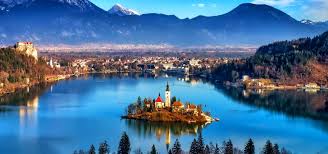

Having arrived from Minsk airport, we were back in the Schegen area in Vienna. The city airport train costs €11 for a one-way ticket and €19 for a return ticket. It is the fastest way to the city centre, taking 16 minutes only. However, we had rented a car so the staff came to the airport to pick us up. He drove us to the office in Schwechat which is 10 minutes away from the airport. We settled the administrative procedures and collected the rental car before driving into the city.

Schönbrunn Palace is Vienna’s most popular tourist destination. Our first stop in Vienna is the Christmas market where we met up with my friends. During the festive season, Vienna has several Christmas markets in various neighbourhoods.

We visited the Christmas market at Spittelberg because it is a quaint little neighbourhood more frequented by locals. The other distinctive element to Spittelberg is the more random, organic feel to the stands. The booths are not all the same design, as is usually the case elsewhere, and they’re scattered across the area, growing out into a sprawling mini-metropolis of lights, scents, and the noise of Christmas revellers.

Walking along the narrow streets of Spittelberg, we stopped to check out the various stalls. We also got a fruit wine to keep ourselves warm as the weather was getting cold. I had the raspberry mulled wine with real pieces of raspberry inside my drink. It tasted so good!


These are some wax art displays. The artist had shaped the wax and creatively infused the colours since that they look like this. It makes a good souvenir to place it at home.

The astonishing summer palace of the Habsburgs, with a surrounding park and numerous surprises for the visitor is a must-visit. Notable highlights include the palace gardens which is a feast of colour and horticultural craftsmanship, as well as the Vienna Zoo (the world’s oldest zoo and home to giant pandas).

In a step back in time, do experience a ride through the city in these horse carriages. At the Spanish Riding School, you can see the world-famous Lipizzaner stallions train and perform.

Are you surprised to see a slice of China here in Vienna. While the size of Chinatown cannot be compared to other big cities such as San Francisco or London, the Chinese food options here are quite extensive too. However, I don’t like the idea that they group the Asian cuisine together, so you have Chinese restaurants serving sushi, which is uncommon in China or Japan. These two places have mutually independent cuisine.

Stephansdom cathedral dominates the city center landscape and is free to go partway inside, with ticketed options for full access, the Treasury, South and North Towers, and other attractions. Walking along Stephanplatz, people were busy doing their Christmas shopping or taking photos of the architecture. The cathedral is the tallest building in the area and we could see its spires from afar.

Amazingly, Stephansdom survived the aerial bombings of WWII, only to suffer from mindless vandalism when looters set fire to nearby buildings in April 1945. The fire spread to the cathedral, destroying parts of the building.
Despite the deprivations of the post-war period, the city and community repaired all the damage within just a few years.

One of the most important squares in the city center of Vienna is the main street of Stephansplatz. Not only does this mark the official “kilometer zero” of the Austrian Capital but it has a place in the hearts and history of the people of the city that is not forgotten and always apparent.
More importantly for visitors to the city, it is a central stopping point on the U-Bahn both for changing lines and also for accessing most parts of the city that is within walking distance.

This is my second time visiting Vienna and I am still intrigued by its Hapsburg architecture and bustling city. While I am not a fan of Austrian food, I was really happy to catch up with my German, Czech and Hungarian friends. As you can see, Vienna is located at the crossroads of Europe and many of them come here to work or study or even for a weekend trip from neighbouring Czech Republic.
Getting around Vienna
The metro and trams are a convenient way to get around Vienna. A single trip ticket on the metro cost €2.40, which is valid for one journey within one zone. If you plan to take more than 3 metro rides in a day, then it makes more sense to get a metro pass. A 24/ 48/ 72 hour metro pass cost €8 / €14.10 / €17.10 respectively. It is valid for unlimited travel for one adult within Vienna for the duration of 24, 48 or 72 hours from the time of validation.

If you plan to cover many places in the city, then the Vienna Pass is like a golden ticket that gets you free entry to numerous attractions, plus other benefits. The 2/3 day passes are great for a weekend of sightseeing
It is possible to drive in Vienna but you need to be prepared for the heavy traffic, especially during the peak hours. Parking can add up to be very expensive if you park in the city centre. Most people who drive to work would park at a parking garage on the outskirts of the city before hopping on an S-bahn train to the city centre.
Tip: The parking garage at the Museumsquartier charges a low daily rate of approximately €10. Otherwise, the price for a 30 minutes block in the city is €1.05, and parking tickets can be bought from tobacco shops or supermarkets.


